Keynote Speaker
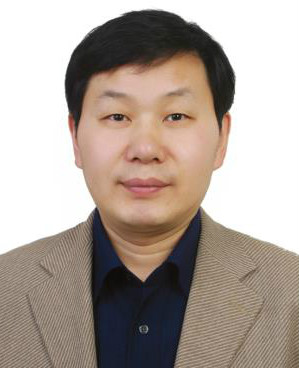
Wanyang Dai
Professor
Nanjing University, China
Speech title: AI Based Simulation and Analysis by Malliavin Calculus for Backward Stochastic Partial Differential Equations and AlphaGo Zero
Abstract: Convolutional neural network (CNN) is a well-known system model in artificial intelligence (AI). In this paper, we develop a generic numerical scheme and model its dynamics by a CNN to simulate the 2-tuple adapted strong solution to a generalized Cauchy (terminal-value) problem, i.e., a unified system of backward stochastic partial differential equations (B-SPDEs including infinite-dimensional B-SDEs) driven by Brownian motions. This unified system can be used to model many real-world system dynamics and the numerical scheme consists of two convolution parts: W layers of backward networks and L layers of reinforcement iterations. It is a completely discrete and iterative algorithm in terms of both time and space with mean-square convergence supported by both theoretical proof and numerical examples. In doing so, the system is assumed to be high-dimensional and vector-valued one, whose drift and diffusion coefficients may involve nonlinear and high-order partial differential operators. Under general local Lipschitz and linear growth conditions, the unique existence of the 2-tuple adapted strong solution to the system is proved by constructing a suitable Banach space to handle the difficulty that the partial differential orders on both sides of these equations are different. During the proof, we also develop new techniques of random field Malliavin calculus to show the unique existence of 2-tuple adapted strong solutions to two embedded systems of the first and second Malliavin derivative based B-SPDEs under random environments. The linkage of our study with Levy jumps and AlphaGo Zero will also be addressed.
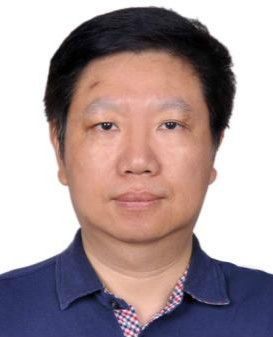
Rongming Wang
Professor
Beijing University of Science and Technology, China
Speech title: Growth and Structure Evolution of Transition Metal Nanocrystals
Abstract: Nanoscale characterization has enabled the discovery of many novel functional materials which started from understanding important relationships between material properties and morphologies. Therefore, nanoscale characterization has become an important research topic in nanoscience. Here we demonstrate the research of the growth and structure evolution of transition metal nanocrystals at atomic scale. Pt-Au/C catalysts were designed and synthesized for catalyzing the formic acid electrooxidation (FAO) reaction. An ultrasound-assisted method was developed to enable the uniform and dense loading of Pt and Au on carbon black without any surfactant. The Pt-Au/C sample with a Pt/Au atomic ratio of 32:68 exhibits an FAO catalytic activity of 14.5 A mgPt−1, which is 153 times higher than that of Pt/C. The extraordinary performance is attributed to the optimized synergistic effect of Pt and Au. Au nanoparticles (NPs) with optimized size and distribution were deposited on few-layer MoS2 by e-beam evaporation firstly. A transition from Au nanoparticles to Au dendrites was observed, which reveals the epitaxial alignment between metal NPs and 2D semiconductors. The atom-resolved morphology and structure evolution of Au NPs/MoS2 in this alignment process was investigated by high resolution TEM and quantitative high-angle annular dark field scanning TEM. Understanding the stability of the catalyst structure and chemistry in the reactive environment at the atomic scale is imperative for the rational design of catalysts, while in situ characterization at the atomic scale in high temperature (>700 ºC) is still a great challenge. Here, tracking a kind of high melting point of intermetallic Co7W6 nanoparticles with defined structure by in situ environmental transmission electron microscope in combination, we directly present the structural and chemical stability of the Co7W6 catalysts during annealing and feeding with carbon at 700-1100 ºC.
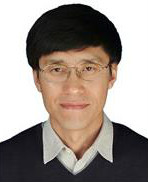
Bo Yu
Professor
Dalian University of Technology, China
Speech title: KDE Distributionally Robust Portfolio Optimization
Abstract: Some KDE based distributionally robust portfolio optimization models with continous distribution are given. Tractable reformulation and convergence results as well asd numerical tests are given.

Feng Xiao
Professor
Tokyo Institute of Technology, Japan
Speech title: A high-fidelity numerical method for multiphase compressible flow with moving interface
Abstract:
Compressible interfacial multiphase flows involve strong discontinuous flow structures, like shocks and material interfaces. Numerical simulation of such flows brings a big challenge to computational fluid dynamics. An acceptable numerical method to solve this sort of problems must be able to at least (1) suppress spurious oscillation in the presence of discontinuities, and (2) resolve accurately the moving interfaces that separate different fluids. The currently available high-resolution finite volume schemes, which combine polynomial-based reconstructions and nonlinear limiting projections to compromise between spurious oscillation and numerical dissipation, can hardly provide adequate solution quality for either smooth or discontinuous solution due to excessive numerical dissipation, which tends to smear out the moving interface and is thus fatal in simulating compressible interfacial multiphase flows.
In this talk, we will present a novel numerical formulation, based on the Boundary Variation Diminishing (BVD) principle, to capture both smooth and discontinuous flow structures with superior solution quality. The BVD principle minimizes the jumps of the reconstructed physical variables at cell boundaries, and thus effectively reduces the dissipation errors. With the THINC function as one of the BVD-admissible reconstruction functions, we have developed a scheme of great practical significance for compressible interfacial multiphase flows. Numerical verifications with widely used benchmark tests show that the present method can simulate interfacial compressible multiphase flows with greatly improved solution quality in comparison with other existing methods.
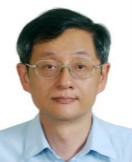
Bang-Fuh Chen
Professor
National Sun Yat-sen University
Speech title:The kinematic and dynamic of swirling wave in a 3D tank
Abstract: The numerical investigation of the physical mechanism of nonlinear sloshing in a 3D square tank is carried out by the proposed time-independent finite difference method. The viscous effect of the fluid on sloshing is discussed and analyzed. The accuracy of the present computations was validated by not only the present experimental measurement but the published theoretical and experimental literature. The evolution of swirling waves during the transient period, including the dynamic, kinematic and energy characteristics of the waves, are explored in detail. The beating phenomenon of sloshing waves is further explained by the relationship between the wave energy and the energy flux transferred from the tank walls. The effects of excitation angle and the liquid depth of the tank on resonant sloshing are also discussed in the study. Based on the present study, the evolutions of swirling waves are very sensitive to physical conditions including liquid depth, excitation angles, fluid momentum, angular momentum and frequencies of external forcing. The switch mechanism of the swirling waves is deeply correlated with the instantaneous free surface profile (the gravitational effect) and the direction of tank motion. The strength of the swirling waves is varied with excitation angle, excitation frequency and water depth of the tank. The frequency domain of swirling waves is explored in this work under various water depths, excitation angles, and excitation amplitudes. As the tank is with shallow liquid depth, the frequency domain of swirling waves increases, whereas, it is limited in a small range for the tank with finite liquid depth. A novel switch mechanism of the swirling waves is reported, and it is deeply correlated with the instantaneous free surface profile (the gravitational effect) and the direction of tank motion. The primary effect on trigging the swirling wave is the secondary horizontal sloshing-induced force (Fy), which induces the secondary fluid momentum Moy and creates the swirling wave. The phase lag between tank motion and angular moment of the flow will affect the strength of the swirling wave and change the phase lag between the fluid momentum components Mox and Moy and switches the rotation direction of the swirling waves.
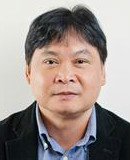
Tuan D. Pham
Professor
Linkoping University, Sweden/ Prince Mohammad bin Fahd University, Saudi Arabia
Speech title: Deep Learning of Fuzzy Recurrence Plots
Abstract: Deep learning in long short-term memory (LSTM) neural networks is one of the most commercial artificial-intelligence achievements. It has widely been adopted for classification and prediction based on time-series or sequential data, such as speech recognition, machine translation, and physiological signal analysis. LSTMs were developed to address the exploding and vanishing gradient problems and have certain advantages over conventional recurrent neural networks, hidden Markov models, and other machine-learning based methods for time-series classification. The concept of a fuzzy recurrence plot (FRP) has been introduced in physics to graphically present temporal patterns of nonlinear dynamics in time-series data. FRPs can be utilized for creating novel feature dimensions of short time series to improve classification accuracy over the direct use of the raw data in either LSTM neural networks or one-dimensional convolutional neural networks. Applications of deep learning of FRPs for early detection of neurodegenerative disorders illustrate the usefulness of the approach.

Kun Zhou
Professor
Wuhan University of Science and Technology, China
Speech title: Advance of Immersed Boundary Method for Complex Fluid Flow Simulations
Abstract: Coming soon...
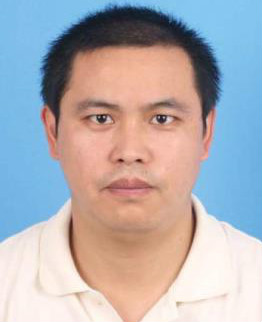
Quanxin Zhu
Professor
Hunan Normal University, China
Speech title: Existence-uniqueness and stability of stochastic nonlinear systems
Abstract: In this talk, we are concerned with existence-uniqueness of a class of stochastic nonlinear systems with/without delays. The systems under our investigation are highly nonlinear not satisfying the linear growth condition, which makes the analysis difficult to ensure the existence and uniqueness of solutions. We first introduce a set of new highly nonlinear growth conditions with/without delays, and then we study the existence and uniqueness of solutions although the corresponding deterministic system may explode in a finite time as well as some properties of the solutions. Furthermore, we study the stability of nonlinear stochastic differential delay equations with Poisson jump. Finally, several examples are given to show the effectiveness and potential of theoretic results.
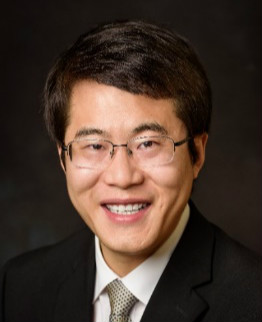
Yi Bao
Assistant Professor
Stevens Institute of Technology, USA
Speech title: Develop Sustainable and Smart Infrastructure through Innovations and Applications of Fiber Optic Sensors and Multi-functional Materials
Abstract: Climate change has triggered wide-range impacts on civil infrastructure and affects the quality of life. While scaling-up infrastructure represents a climate adaptation effort, it may exacerbate climate change, since construction of infrastructure involves significant energy consumption and carbon emission. Sustainable and smart infrastructure has potential to synergize climate change adaptation and mitigation efforts. This presentation will introduce efforts in sensors and materials for development of sustainable and smart infrastructure. To begin with, recent advances in fiber optic sensors for infrastructure applications will be presented. The research innovates in three fronts. First, mechanical and thermo-mechanical models are developed for distributed fiber optic sensor to understand the sensor data at normal and high temperatures. A novel approach to enhancing the sensor’s thermal stability is developed. Second, distributed fiber optic sensors are applied to assess condition and understand degradation mechanisms of structures under mechanical and thermal loadings. Third, a novel fiber optic corrosion sensor is developed through micro-fabrication and thin-film deposition for in-situ monitoring of corrosion. Recently, fiber optic sensors are applied for real-time monitoring and control in building-scale 3D printing using engineered cementitious composites (ECCs). ECCs have been developed with inherent strain-hardening and multi-functionality, such as self-sensing, self-healing, and self-cleaning, and tailored for 3D printing of infrastructure with improved sustainability, durability, resilience, and multi-functionality. ECCs are also applied in innovative design of reconfigurable structures adaptive to digital construction.
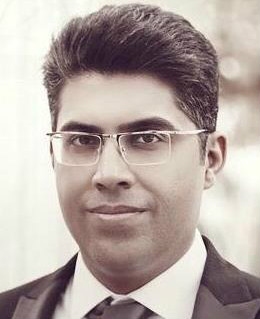
Seyed Hooman Ghasemi
Assistant Professor
Qazvin Azad University, Iran
Speech title: Reliability Index for Non-normal Distributions of Limit State Functions
Abstract: Reliability analysis is a probabilistic approach to determine the safety level of a system. Reliability is defined as a probability of a system (or a structure, in structural engineering) to functionally perform under given conditions. In the 1960s, Basler defined the reliability index as a measure to elucidate the safety level of the system, which until today is a commonly used parameter. However, the reliability index has been formulated based on the pivotal assumption which assumed that the considered limit state function is normally distributed. Nevertheless, it is not guaranteed that the limit state function of systems follows as normal distributions; therefore, there is a need to define a new reliability index for no-normal distributions. The main contribution of this paper is to define a sophisticated reliability index for limit state functions which their distributions are nonnormal. To do so, the new definition of reliability index is introduced for non-normal limit state functions according to the probability functions which are calculated based on the convolution theory. Eventually, as the state of the art, this paper introduces a simplified method to calculate the reliability index for non-normal distributions. The simplified method is developed to generate a non-normal limit state in terms of normal distributions using a series of Gaussian functions.
































